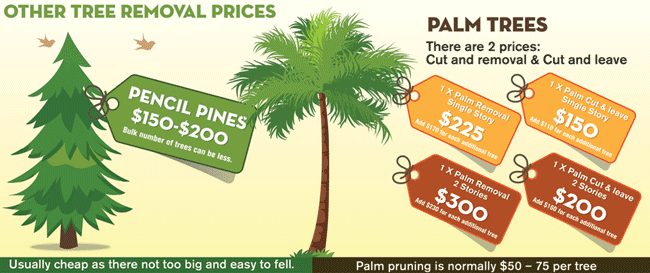Seasonal Tree Treatment: When Is The Very Best Time To Eliminate Trees?
Seasonal Tree Treatment: When Is The Very Best Time To Eliminate Trees?
Blog Article
Web Content By-Ashby Halsey
When considering the most effective time to eliminate trees from your building, a crucial equilibrium must be struck in between tree health and safety concerns. Consider visit the next page posed by unsteady or worn out trees, and how their elimination can alleviate these dangers. Yet when precisely is the optimum minute to undertake this job? Stay tuned to find the seasonal subtleties that can influence your choice and make sure the well-being of your trees and environments.
Ideal Timing for Tree Elimination
When it involves picking the ideal timing for tree removal, it's crucial to consider factors such as the wellness of the tree, security issues, and environmental laws. Evaluating the tree's total health is necessary to identify if elimination is necessary. Dead or unhealthy trees posture dangers and need to be removed quickly to avoid accidents or residential or commercial property damages.
Safety problems, such as proximity to buildings, power lines, or roadways, also play a considerable role in identifying the best time for elimination. Sticking to ecological guidelines is essential to ensure that the removal process is carried out properly and lawfully.
Taking into consideration these factors, the ideal timing for tree elimination might differ. Generally, it's recommended to eliminate trees during the inactive period, typically in late loss or wintertime. Throughout this time, trees aren't actively expanding, making removal less stressful for the tree. Additionally, with less leaves, it's less complicated for arborists to evaluate the tree's framework and safely perform the removal procedure.
Seasonal Variables to Consider
To ensure successful tree care methods, it's vital to think about the seasonal variables that can affect the health and growth of your trees. Recognizing these seasonal variations can assist you plan your tree care activities efficiently.
In spring, trees focus on brand-new development and budding. This is an excellent time for trimming to form the tree and remove dead branches.
Summertime brings hot weather, requiring appropriate watering to keep trees hydrated.
Autumn is when trees start planning for inactivity, making it a good time for deep origin fertilization to support their root systems.
Winter months, with its cold temperatures, is a duration of dormancy for a lot of trees, making it a suitable time for tree elimination or significant pruning.
Influence On Tree Wellness and Landscape
Considering the seasonal aspects that affect your trees is vital for their total health and wellness and the appearance of your landscape. Proper tree care throughout the year can considerably impact their well-being and the visual allure of your outside area.
As an example, trimming during the dormant cold weather can advertise healthy development in the spring, while getting rid of dead or infected branches in the loss can protect against potential hazards throughout wintertime storms. Additionally, monitoring your trees for indications of bugs and diseases during the suitable seasons can aid preserve their vigor and protect against widespread invasions.
In addition, the problem of your trees directly influences the general landscape design. Trees that are well-kept and healthy can boost the appeal and worth of your property, while neglected or harmed trees might detract from the aesthetic appeal of your outside environment.
Final thought
Remember, the best time to remove trees is throughout the inactive period to lessen anxiety on the tree and ensure its health and safety. Take into consideration the seasonal aspects and prospective threats before scheduling tree removal. By focusing on liable tree treatment and maintenance, you can maintain a secure and cosmetically pleasing landscape for several years ahead.
